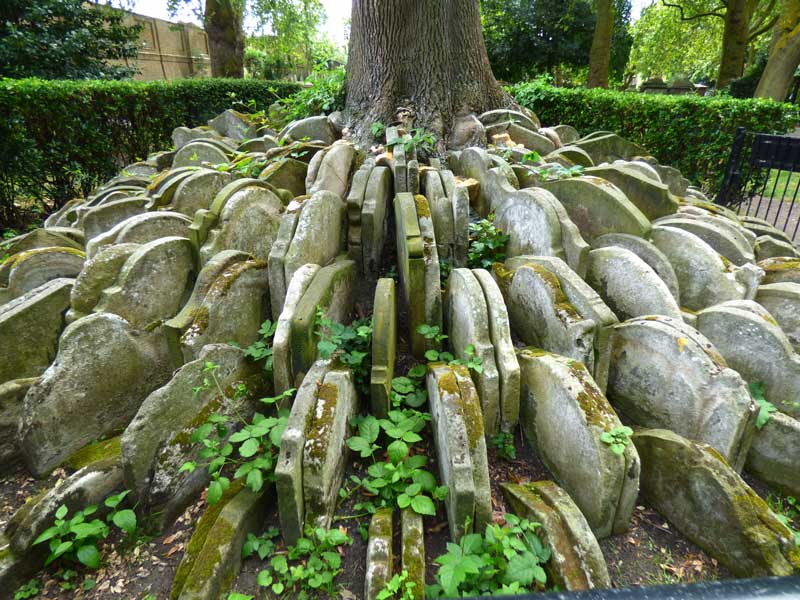
At last - it may be, Death took spite
Or jesting only meant to fright -
He sought for Jack night after night
The churchyards round;
And soon they met, the man and sprite,
In Pancras' ground.
From Jack Hall. By Thomas Hood (1799-1845)
There was a time when your average, self respecting Londoner wouldn't be seen dead in St Pancras Church Yard. And, if they would - well, chances are, they wouldn't stay there for that long.
You see, the former remote setting of the burial ground helped make it an irresistible draw to the bodysnatchers, and thus those who found themselves laid to rest beneath its hallowed tufts were unlikely to enjoy the prospect of resting in peace.
Charles Dickens (1812 - 1870) was well aware of its sinister reputation, and he actually featured the burial ground in A Tale of Two Cities as the location to which Jerry Cruncher brought his young son, Jerry Junior, to indulge in a spot of nocturnal bodysnatching or "fishing", as Dickens euphemistically referred to it.
But the former nefarious activities of the bodysnatchers pale in comparison to the gargantuan appetite of the Midland Grand Railway when the iron fingers of its all consuming tracks began clawing their way across the turf of this isolated corner of North West London in the mid 1860's, and the mighty bulk of King's Cross Station began to rise, Kraken-like, over the southern boundary of the burial ground.
The idea of passengers alighting from the trains to be greeted by a welcoming committee of some 88,000 former Londoners who had "departed this life on..." rankled somewhat with the planners, and thus the Bishop of London, in whose diocese the burial ground was located, began the search for a worthy soul who could retrieve what was left of those bygone citizens whose remains were, inconveniently, standing - or in this case lying - in the path of progress.
The unenviable task was given to Covent Garden architect Arthur Blomfield (1829-1899) who, in addition to being an exponent of the Gothic Revival style of architecture, was also a master at delegation. He assigned the job to his assistant, the young Thomas Hardy (1840 - 1928) - whose literary masterpieces, such as Under The Greenwood Tree, Far From The Madding Crowd, The Mayor Of Casterbridge, Tess Of The d'Urbervilles, and Jude The Obscure were yet to seal his reputation as one of the titans of English literature - and thus, in 1865, Thomas Hardy went to work overseeing the dismantling of many of the churchyard's tombs and the disinterment, followed by the re-internment in a massive pit, of their occupants.
A number of the tombstones were piled together and an ash tree was planted at their centre to create an ever evolving monument, or even art installation, that is now known as "The Hardy Tree", and which is one of the true delights and curiosities of, what is now, a built up district which has long been, very much, an integral part of the ever expanding Metropolis.
Whether Hardy was responsible for the tree that bears his name is unclear. But the tree, standing sentry like over the groupings of moss-clad stones that encircle it - some of which are now even embedded in to its trunk - is a fitting memorial to the association between this lovely little park and a young architect who would rise to become one of England's most respected poets and novelists.